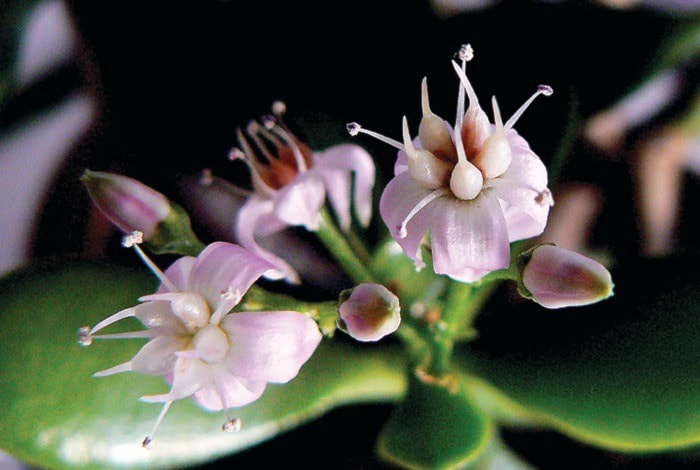Once winter solstice has passed, those few additional minutes of sunlight each day never fail to bring on yearnings for springtime.
In the Campbell River area, however, spring’s first wild blooms will elude us for at least another month or two.
Nevertheless, one of my faithful (albeit neglected) houseplants just surprised me by breaking into full bloom, something not seen in many decades past. A close inspection of the rarely-seen pink flowers on my jade plant immediately showed an uncanny resemblance to spring’s saxifrages.
Jade plant (Crassula ovate) is classified in the same scientific order as the saxifrages, and is a member of the stonecrop family. One might say the jade plant is a ‘cousin’ to the saxifrage and stonecrop. Anyone who has ever examined the lovely stonecrop flowers will know them by the flower parts in fives.
And so it is with my jade plant, now alive with bursts of pink five-petalled flowers, each one-quarter of an inch in size, further embellished with 5 plump, upright follicles and five pollen-tipped stamens.
Most plant owners count on the succulent jade as a dependable choice for sunny windows and guaranteed, year-round jade-green leaves. It is a native plant to South Africa.
Simple – or planned – neglect will usually bring a jade plant into bloom. Water every 10-20 days in winter, or even less, allowing the plant to become dry between watering. Many plant species, when dried out, will think their end is near, and will produce flowering parts to assure reproduction of a next generation.
Find Christine’s trail guidebook: Nature Campbell River, at Coho Books or Campbell River Museum. E-mail: wildernesswest@shaw.ca.
